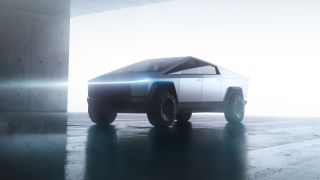
It’s one of the three themes for this decade, described here in 2019.
Oil is going away. This must happen. The world can’t survive otherwise, at least the part that humans inhabit. We’re already seeing evidence.
The key to getting there is by replacing oil with renewable energy for transportation. That requires a lot of innovation.
Back in 2019 Elon Musk claimed he had the answers. He didn’t, at least for most of us.
That’s because even Tesla batteries have a problem (beyond catching fire). Their energy density is low, much lower than gasoline. A gas car is lighter than an electric and goes further on a fill-up.
This will change, but it will remain a problem for years.

Most haven’t. The company that comes the closest is BYD, a Chinese company, that sells a light, low-range car for the equivalent of $25,000. That’s the industry sweet spot. Sadly, the BYD is too small, and too light, to make it in the American market right now.
Tesla got where it has by selling the equivalent of Cadillacs, in the form of sedans and crossovers. The Cybertruck is their first big vehicle. It’s going to be a disaster. It’s too heavy, which means it won’t have a lot of range, and will carry a high price tag. I suggest you sell Tesla stock.
This delivers a great opportunity for other American companies. That was the aim of the Inflation Reduction Act incentives. Build a battery industry here (electric cars are all about the batteries), create incentives for mid-market cars, take the market.

There is a way to avoid the tradeoffs over the next 3 years. Hybrids. I have a hybrid, a Toyota Corolla, which gets over 500 miles on a 10-gallon gas tank. But it’s still a gas-first hybrid. The engine and the battery both feed the drivetrain. There’s no plug in it.
The right answer is a plug-in hybrid. You have a motor, but that exists to feed the battery, which you can also feed from a plug in your house. The Li Auto Li 9 only gets 130 miles in a charge, but with the gasoline back-up you can travel 800 miles without a fill-up. It’s a roomy 5-seat SUV with all a Tesla’s bells and whistles. You plug it in at home, just as with an e-bike, and you’re good for the day’s chores. You’ll only get gas when you go out of town.
Li is taking market share from Tesla in China, the most sophisticated EV market on the planet. Toyota is moving in this direction, and that direction is a winner. Lighter batteries, storing more energy, will evolve to eliminate the gas engine, but for now hybrid is the way to go. No range anxiety, all the bells and whistles you expect, relatively low weight, and affordable.










test test test
test again